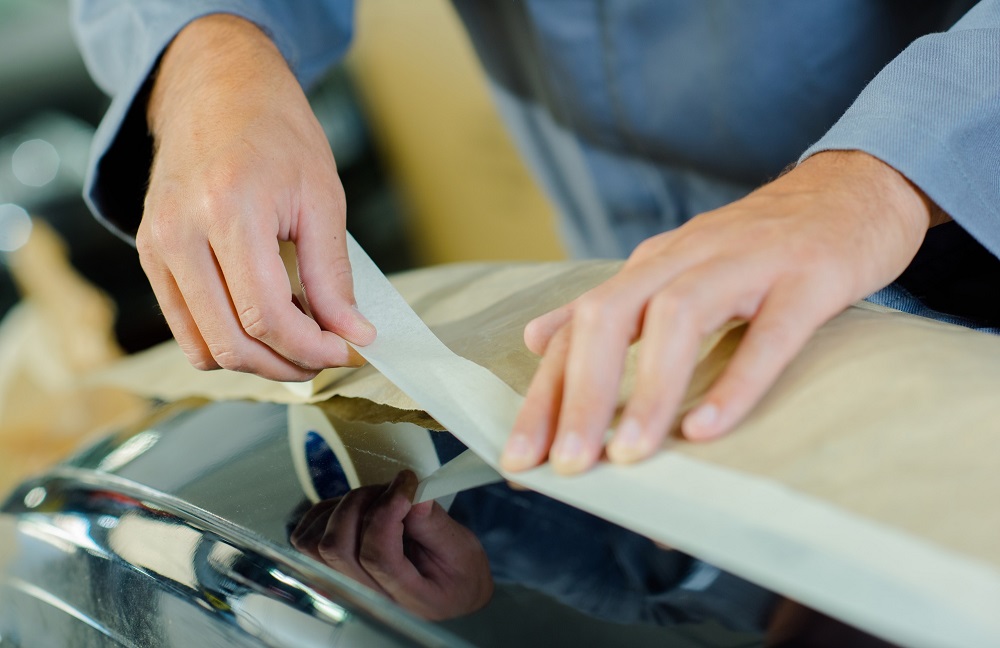Duct tape is undeniably a versatile tool, but it comes with a sticky downside—residue on your car’s surface. Whether it’s from a temporary fix, a bumper sticker, or an impromptu repair, removing duct tape residue requires finesse. In this detailed guide, we’ll explore various methods to tackle this sticky situation and ensure your car maintains its pristine appearance.
Understanding the Challenge
Why Does Duct Tape Leave Residue? The adhesive in duct tape, designed for strong bonding, can leave a residue when applied to surfaces like car paint. Factors such as temperature, exposure to sunlight, and the duration of tape application contribute to the severity of the residue.
Assessing the Damage
Inspecting the Residue Before embarking on the removal process, take a moment to inspect the residue. Is it a recent application, or has it been stubbornly clinging to your car’s surface for an extended period? The age of the residue significantly influences the approach you should take.
Quick Solutions for Fresh Residue
1. Peel it Off Gently For fresh residue, the simplest method is often the most effective. Begin by gently peeling off as much tape as possible. Use your fingers or a plastic scraper to avoid causing scratches.
2. Rubbing Alcohol Magic Dampen a cloth with rubbing alcohol and gently rub the residue. This method works well for fresh residue and is generally safe for your car’s finish.
3. Soapy Water Soak Create a soapy water solution and generously apply it to the affected area. Allow it to sit for a few minutes, then scrub with a soft brush. Rinse the area thoroughly to remove any soap residue.
Battling Stubborn, Older Residue
1. Heat and Peel Technique Older residue can be more stubborn. Use a hairdryer to warm the residue, making it more pliable. Peel off the tape slowly, and follow up with rubbing alcohol to remove any remaining adhesive.
2. Oil-Based Solutions Apply cooking oil, WD-40, or olive oil to the residue. Let it sit for a few minutes to penetrate the adhesive, then wipe away. Clean the area with soapy water afterward to remove any oily residue.
3. Commercial Adhesive Removers For persistent residue, consider investing in a high-quality adhesive remover from an auto supply store. Follow the product instructions carefully for optimal results. (See Also: How Much to Wrap a Jeep Renegade: Cost Guide and Expert Tips)
Preventive Measures
1. Avoid Prolonged Application Minimize the time duct tape adheres to your car. The longer it stays, the more challenging it becomes to remove. If possible, use it as a temporary solution and replace it promptly with a permanent fix.
2. Test in an Inconspicuous Area Before using any adhesive remover, test it on a small, inconspicuous area to ensure it won’t damage your car’s paint. This precautionary step is crucial, especially for older or sensitive vehicle finishes.
The Final Touch
Polishing for a Seamless Finish Once you’ve successfully removed the residue, consider polishing the affected area to restore the shine and protect the paint. Regular waxing can also make future residue removal easier.
Additional Tips and Tricks
1. Vinegar Solution A mixture of vinegar and water can be effective in removing residue. However, use it cautiously, as vinegar may have varying effects on different paint types.
2. Clay Bar Treatment For a thorough cleaning, consider using a clay bar to remove any remaining contaminants on the car’s surface after the residue is gone.
3. Professional Detailing If the residue persists or you’re hesitant to tackle the issue yourself, consider seeking professional detailing services. Experienced detailers have the expertise and tools to address stubborn residue without harming your car’s finish.
Expert Tips: Mastering Duct Tape Residue Removal Like a Pro
Navigating the realm of duct tape residue removal requires finesse and know-how. As you embark on this sticky journey, consider these expert tips to elevate your approach and ensure a flawless finish.
1. Immediate Action Is Key
- Address fresh residue promptly to prevent it from bonding more strongly to the surface.
- The longer duct tape lingers, the more challenging the removal process becomes.
2. Mindful Peeling Techniques
- When peeling off duct tape, do so slowly and at a low angle to minimize the risk of leaving adhesive behind.
- Use a plastic scraper or your fingers, avoiding abrasive tools that could scratch the car’s surface.
3. Temperature Matters
- Warm the residue with a hairdryer or sunlight to increase its pliability, making it easier to peel off.
- Exercise caution to avoid overheating, which could damage the paint.
4. Oil-Based Solutions – A Gentle Touch
- Opt for cooking oil, WD-40, or olive oil for older residue.
- Allow the oil to penetrate for a few minutes before wiping away, followed by a thorough soapy water cleaning.
5. Precision with Adhesive Removers
- Select a high-quality adhesive remover tailored for automotive use.
- Follow product instructions meticulously, and avoid excessive use to prevent damage.
6. Test in Unseen Areas
- Before applying any solution, test it on a small, inconspicuous area to ensure compatibility with your car’s paint.
- This precautionary step minimizes the risk of unintended damage.
7. Polishing for the Perfect Finish
- Consider polishing the affected area after residue removal to restore shine.
- Regular waxing provides an added layer of protection against future residue challenges.
8. Clay Bar Finishing Touch
- Use a clay bar to remove any remaining contaminants on the car’s surface post-residue removal.
- This step ensures a smooth and clean finish.
9. Vinegar Dilution – Proceed with Caution
- Vinegar mixed with water can be an effective solution for residue removal.
- Exercise caution, as vinegar may react differently with various paint types.
10. Professional Detailing for Stubborn Cases
- If the residue persists or you’re uncertain about DIY methods, consult professional detailing services.
- Detailers possess specialized tools and expertise to address challenging residue without compromising your car’s finish.
Embark on your duct tape residue removal journey armed with these expert tips. By combining precision with patience, you’ll master the art of restoring your car’s surface to perfection. (See Also: How to Fix Large Paint Chips on Car: Expert Tips for Flawless Repairs)
Frequently Asked Questions: Decoding Duct Tape Residue Woes
Navigating the realm of duct tape residue removal can raise questions. Fear not! We’ve compiled a set of frequently asked questions to unravel the mystery and provide clarity on banishing sticky remnants from your car’s surface.
1. Q: Why Does Duct Tape Leave Residue on Cars?
A: Duct tape’s adhesive is designed for strong bonding. Factors like temperature, sunlight exposure, and duration of application contribute to the residue left on car surfaces.
2. Q: Can I Leave Duct Tape on My Car for an Extended Period?
A: It’s best to avoid prolonged application. The longer duct tape adheres, the more challenging it becomes to remove. Use it as a temporary solution and replace it promptly with a permanent fix.
3. Q: Is It Safe to Peel Off Duct Tape Residue with Fingers?
A: Yes, it’s safe to peel off residue with your fingers, especially for fresh residue. For stubborn residue, a plastic scraper can be used, ensuring a gentle approach to avoid scratches.
4. Q: What Is the Best Method for Fresh Duct Tape Residue?
A: For fresh residue, start by gently peeling off as much tape as possible. Follow up with rubbing alcohol or soapy water for a clean finish.
5. Q: How Do I Deal with Older, Stubborn Residue?
A: For older residue, use the heat and peel technique with a hairdryer. Apply oil-based solutions like cooking oil or WD-40, and consider commercial adhesive removers for stubborn cases.
6. Q: Will Vinegar Damage My Car’s Paint?
A: Vinegar mixed with water can be effective, but it may have varying effects on different paint types. Test in an inconspicuous area before widespread application.
7. Q: Can I Use Adhesive Removers on Any Car Paint?
A: It’s crucial to choose an adhesive remover specifically designed for automotive use. Test in a small area before extensive application to ensure compatibility. (See Also: Is Isopropyl Alcohol Safe for Auto Glass? Tips for Effective and Damage-Free Cleaning)
8. Q: Is Polishing Necessary After Residue Removal?
A: Polishing is recommended to restore shine and protect the paint. Regular waxing can also make future residue removal easier.
9. Q: How Often Should I Wax My Car to Prevent Residue Buildup?
A: Wax your car regularly to create a protective layer. The frequency depends on factors like weather conditions and driving habits but aim for at least a few times a year.
10. Q: When Should I Seek Professional Detailing Services?
A: If the residue persists or you’re unsure about DIY methods, consider professional detailing. Experts have the tools and knowledge to address challenging residue without causing harm.
These FAQs provide insights into common concerns about duct tape residue removal, empowering you to tackle the issue with confidence and precision.
Conclusion
Dealing with duct tape residue on your car requires a tailored approach based on the specific circumstances. Whether it’s a fresh application or a long-standing issue, these tried-and-true methods, combined with preventive measures, will help you restore your car’s appearance without causing damage. Take your time, follow the steps diligently, and bid farewell to the sticky remnants, ensuring your car stays in top-notch condition for the journeys ahead.



